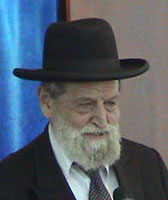Beit Midrash
- Torah Portion and Tanach
- Bereshit
- Vayeshev
The Torah study is dedicatedin the memory of
Asher Ben Haim
The Ramban and others bring a midrash that the name Peretz indicates that he represents the moon, which breaks forth and is more or less visible depending on the times, whereas Zerach represents the sun, which shines consistently. So too, the kingdom from Peretz is sometimes fuller and sometimes shrinks and disappears. (For this reason, we mention the House of David during Kiddush Levana, as we want it to shine again, like the relatively new moon under which we stand.) The midrash asks that the firstborn should correspond to the more prominent sun, and its answer is apparently that Zerach was also first somewhat in that his hand came out first. What does the symbolism of the sun and the moon teach us about kingdom in Israel?
The moon, even when full, is but a reflection of the light of the sun. Furthermore, the moon is full when we see the part that faces the sun and "disappears" when none of its surface that we can see faces the sun. Indeed, the Jewish king, with all his power and greatness, derives his true "light" from Bnei Yisrael. While he helps bring about the nation’s success, when the nation does not deserve its king, it will not merit having one. The success of the king is also dependent on the extent to which he faces the nation, addresses its needs, and displays and represents that which is positive in the nation.
Although, as we saw, it was important that Peretz, father of the lineage of David, was ultimately the firstborn, and although the lineage was primarily transferred from father to oldest son, there is also importance to that which was younger or smaller. As Rabbeinu Bachyei points out, David himself, like the moon, was referred to as the katan (young one) (Shmuel I 17:14). Physically also, David was not a giant, and he looked out of place trying to fit into Shaul’s armor and fighting Goliat. But he broke forth, and went beyond his apparent capabilities, like his forefather, Peretz. Shaul, on the other hand, while he was the tallest in all of Israel, did not live up to his capabilities and was accused of being katan in his own eyes (ibid. 15:17).
May we merit the restoration of the House of David and the accompanying restoration of the moon to its formal glory as it was before it was reduced (from Kiddush Levana).

Eradicating Hatred in Our Generation
Rabbi Moshe Tzuriel | 25 Kislev 5784

Where Did the Troubles Start?
Parashat Vayeshev
Rabbi Yossef Carmel | 5764























